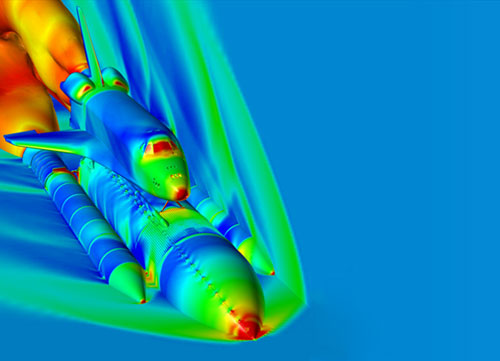If you ever work for NASA, here is an easy way to lose your job: build a brand new, high-tech space shuttle without running simulations on it. Don't worry about analyzing how it's going to do in the air -- that's just a waste of time and money. Instead of doing that, we'll just try flying it when it's ready and fix any problems that show up. If things go dreadfully wrong, we'll build another. Don't worry, though, the second one will be much better. So will the third. And the fourth.
In the years before computer simulations, this is the route to success that often had to be taken (although not with space shuttles, but perhaps with architecture and bridge building). Success ultimately hinged on the knowledge of the designers and their ability to predict what sorts of conditions the structure would have to tolerate. Today, we're still hinging our success on the same principles, but we're able to predict how a structure will survive far more accurately that we could in the past. We can accurately model wind resistance, temperature change, pressure variation and a multitude of other factors as formulas and calculate them all in a matter of minutes instead of days or weeks. In addition, we're able to try entirely new designs virtually before working with a single piece of real-world material to determine whether a project is worth pursuing or if the design needs to be changed.
Why is this so great?
- It's possible to do a lot of the planning and testing of a design in a much shorter period of time for much less money than it was in the past.
- It's possible to see what points of a structure will bear the most stress, and therefore which parts should be reinforced.
- Adjusting a model is far simpler than rebuilding a real-world prototype.
Software is now available for simulating conditions on buildings, bridges, cars, space shuttles and satellites, and beyond. 
